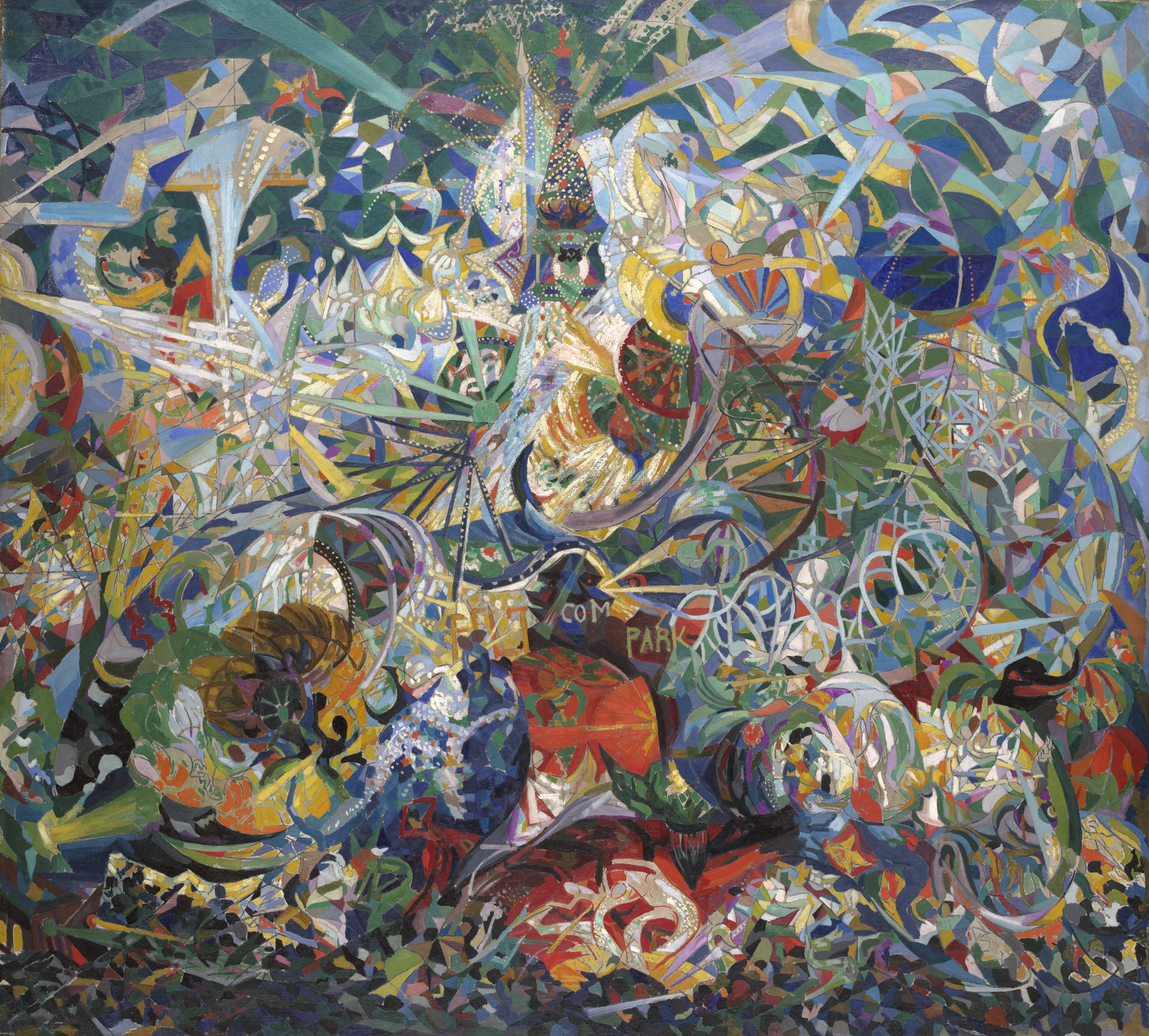Have you heard of Mardi Gras (French for Fat Tuesday, also known as Shrove Tuesday)? It is the final day of Carnival, which falls on the day before the beginning of Lent on Ash Wednesday. This day reflects the practice of the last night of consuming rich, fatty foods in preparation for the Christian fasting season of Lent, during which the consumption of such foods is avoided.
Mardi Gras in the United States is celebrated in a number of cities and regions. Most of these places trace their Mardi Gras celebrations to French, Spanish, and other Catholic colonial influences on the settlements over their history. It nearly always involves the use of masks and costumes by its participants, and the most popular celebratory colors are purple, green, and gold. In New Orleans, for example, these often take the shape of fairies, animals, people from myths, or various Medieval costumes and clowns.
Today, we present a masterpiece depicting Mardi Gras celebrations on Coney Island in New York. Painted by Joseph Stella, born in Italy, it captures, as the painter described himself, the chaotic energy of the "surging crowd" and "revolving machines" that conjured "violent, dangerous pleasures." This vibrant mix of electric lights, whirling dancers, and the gleaming steel structures of the Ferris Wheel and roller coasters marked his first American artistic exploration. Fragments of honky-tonk signs reference popular attractions, like Steeplechase Park and Feltman’s Restaurant (where the hot dog was created). The letters C-O-M subtly evoke the commedia dell’arte, a European counterpart to the secular Mardi Gras celebration.
Although it is not Mardi Gras today, have something sweet to eat today!
P.S. Speaking of something sweet ... Check out our Food & Drinks 50 Postcards Set, with the most delicious still lifes in art history!
P.P.S. Carnival has been portrayed in various ways in art throughout the centuries. Depending on the region, artists presented different traditions. Here are 5 takes on Carnival in art!


 Joseph Stella
Joseph Stella